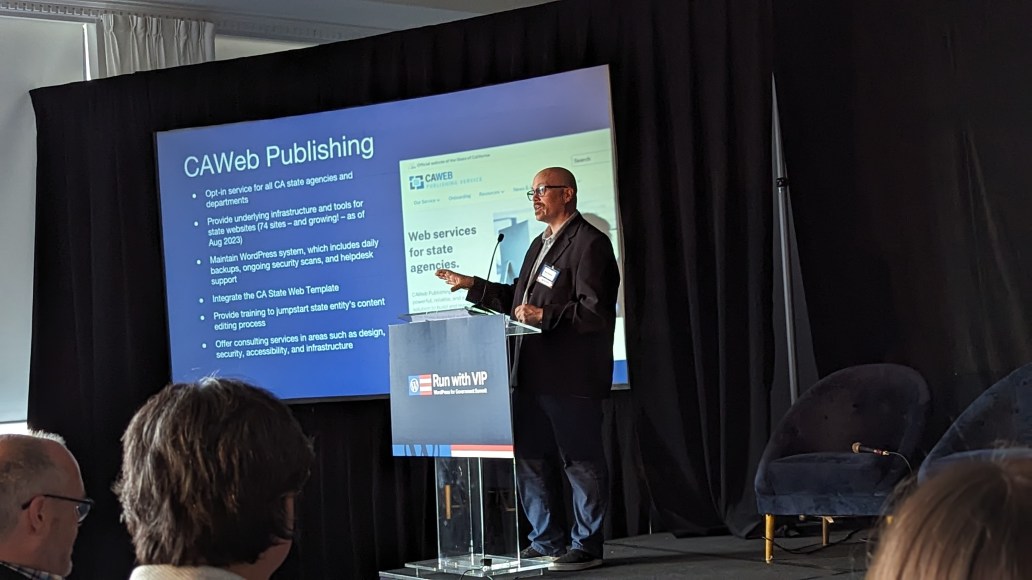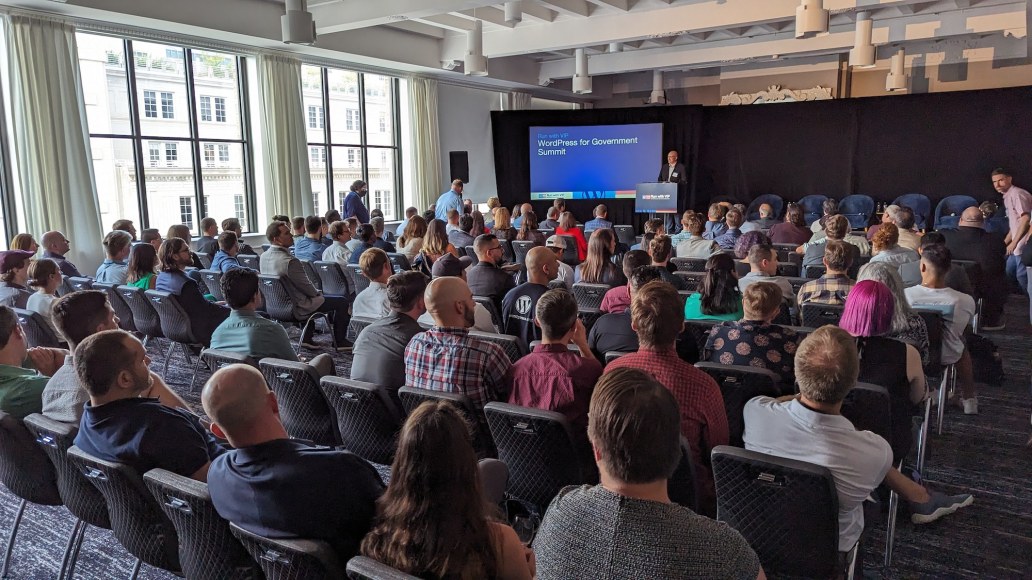The digital revolution has been gradually sweeping across sectors, leaving a transformative imprint everywhere. The government sector, often perceived as a slow adopter, has been making impressive strides, turning to open source solutions.
WordPress VIP’s recent WordPress for Government Summit in Washington, D.C. served as a testament to this transition, offering insights into the inherent challenges, potential solutions, and the transformative power of such digital interventions to run the government web.
Open source: a tool for equal access
At its core, WordPress, the most popular open source CMS on the planet, represents more than just a platform—it symbolizes democratization and equal access.
The shared ideals between WordPress and the public sector emphasize community collaboration, decentralization, and making digital resources accessible to all. This aligns seamlessly with public service’s very essence, which emphasizes equity and inclusivity.
The undeniable push towards cloud adoption, particularly within the government sector, promises transformative changes. Embracing public sector programs like FedRAMP not only augments efficiency but also ushers in significant cost savings and robust security. By harnessing cloud technology, governments can revolutionize processes, fortify data security, and provide superior services to their citizens.
Navigating the digital quagmire
Transitioning to digital platforms isn’t devoid of challenges. But the state of California has been a trailblazer in the public sector digital space.
As Blaine Wasylkiw, Deputy CTIO of the Department of Technology for the State of California (CDT), noted during the WordPress for Government Summit, obstacles range from the intricacies of managing disparate hosting platforms to standardizing diverse platform plugins.
Moreover, changing deep-rooted internal processes and integrating them with newer, more efficient systems often necessitates a paradigm shift for the public sector.
Recently, the CDT formalized a digital strategy vision, aiming to influence and improve statewide digital services by uniting 200 state departments and 70+ disparate websites under a unified digital experience. The goal, Wasylkiw noted, was to ensure that digital state services are continually evolving and meeting residents’ needs by combining technology with a human-centric design approach—ensuring that public services are accessible, efficient, and responsive.

Website consolidation in the Golden State
Over the years, the State of California’s digital landscape had run into numerous digital challenges (and migrations) due to technological evolution and shifting focus. These transitions meant the state’s CAWeb team had to manage 74 distinct websites across multiple hosting platforms, which presented a significant challenge for the resource-strapped organization.
With no standardization, each site had its unique design and utilized various plugins for similar functionalities. This variability increased the workload, with the team continuously resolving plugin updates, conflicts, and other related issues.
“We had these 70ish websites spread across multiple platforms and it was a logistical nightmare.”
— Blaine Wasylkiw, Deputy CTIO, Department of Technology for the State of California
The ultimate goal was to consolidate these websites under a unified WordPress-based platform and ensure smooth migration without any disruptions or downtimes.
This consolidation was also imperative for maintaining and improving security, especially given escalating cyber threats. Additionally, by achieving hosting stability and reducing day-to-day technical concerns, the CAWeb team could focus on their core mission: enhancing the state’s digital ecosystem.
However, achieving this objective wasn’t without its challenges. Beyond the logistical nightmare of scattered hosting platforms, plugin compatibility across so many sites was an ongoing concern as well.
“At WordPress, we talk a lot about democratizing publishing, democratizing access to communication. Philosophically and fundamentally, [we believe] a well-informed citizenry is a foundation of strong democracy.”
—Nick Gernert, CEO, WordPress VIP
Running the government web
The emphasis became shifting the CAWeb team’s focus from routine hosting and maintenance issues to empowering state departments by standardizing on a WordPress-based platform. CAWeb hoped the move would better serve California residents, the ultimate end-users.
And it did.
With the transition, there was a staggering 71% improvement in response times across all migrated websites, underscoring the efficiency gains inherent in such digital transformations, according to Wasylkiw.

Strategies for public sector digital mastery
Drawing from California’s playbook, several strategies emerge for governments aiming for similar digital efficiency:
- Collaborative ventures: Partnering with experts in implementing WordPress at scale (and for the public sector) can ensure smoother transitions for federal and state agencies.
- Phased migration: A calculated, step-by-step digital migration approach reduces risks, allowing for challenges to be addressed progressively.
- User focus: Technology should always prioritize the end-user. By adopting user-centric designs and strategies, governments can ensure that technology serves its citizens, not the other way around.
Looking forward
With open source platforms promising democratization, heightened efficiency, and fortified security, the future of public services looks promisingly digital.
The focus should be on constant evolution, refining digital strategies, and placing users at the helm. Emphasizing performance, security, and fostering collaborations is also crucial. By providing platforms and resources for entities lacking technological expertise, governments can ensure inclusivity in the digital era.
More Government Summit takeaways
Besides Wasylkiw’s Flash Talk during the Summit, WordPress VIP also hosted a panel presentation—Modernizing Government and Civic Tech with WordPress. Read the recap here.
